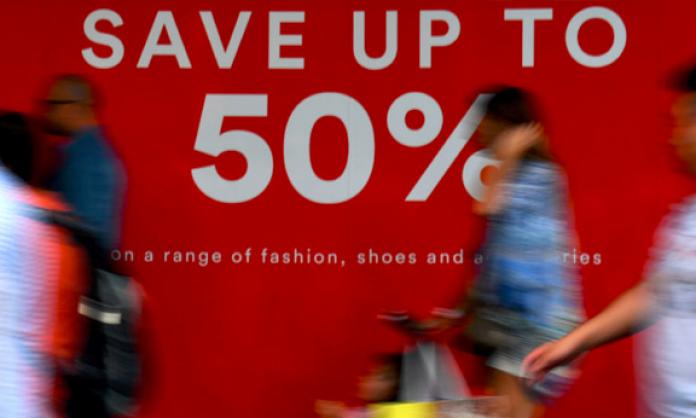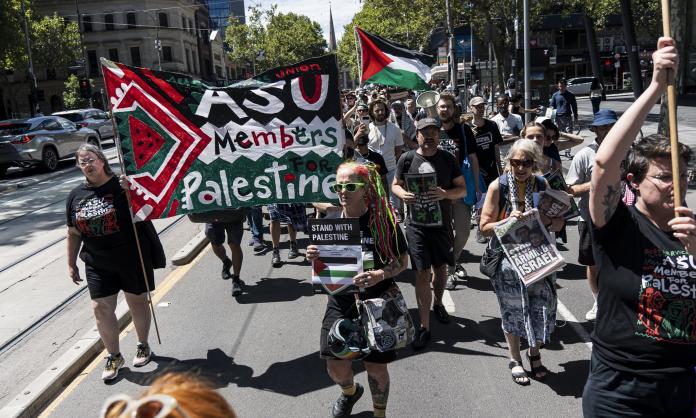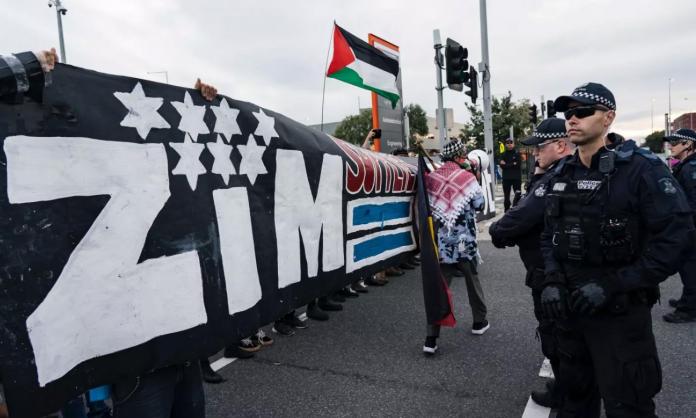The Fair Work Commission decision on penalty rates will result in the biggest wage cut since the Great Depression. It is class war.
Far from accepting the “business case” for the attack, hospitality, fast food and pharmacy industry workers have clogged talk back radio lines with stories about how they will now be pushed closer to the edge. Others are calling in to commiserate and to lay into the business owners who, everyone knows, simply want more money in their own pockets. Tens of thousands have signed petitions opposing the decision. The Sydney Morning Herald published one of its stable of writers under a headline calling the decision, “a war on the young and the poor”.
Some of the thousands to have responded furiously to the news still recall the spectacle, reported in January, of Australia’s business elite calling for Sunday wage cuts from the decks of their luxury yachts at Sorrento’s annual Couta boat race.
Evelyn, a Spotlight worker, who learned she will lose $80 a week, or 13 percent of her $600 weekly wage, fronted a media scrum to ask on national television if anyone can explain how she’s supposed to survive now. “$80 is a huge amount, I’m telling you”, she said.
This is heat that business groups are willing to cop. They knew when they launched this case that support for a wage cut for low paid workers was almost non-existent. They know how popular penalty rates are, in particular after trying, and failing dismally, to undermine the widespread attachment to the notion of a weekend. They came at it from every angle. They called it an "anachronism" and "a hangover from a bygone era" when Sundays were for church. They blamed weekend penalty rates for unemployment and small business failure. It was all to no avail.
Workers wouldn’t be talked out of their weekends, not with statistics about church attendance rates or rubbish about jobs growth. In 2013, an Essential Poll found that 81 percent thought that people should be paid more for working outside ordinary hours. Despite the business campaign to chip away at this sentiment, a 2015 poll showed that support for penalty rates had not moved an inch.
Throughout 2016, there were revelations that some of the country’s biggest companies were operating under dodgy workplace deals that unlawfully undercut the penalty rate entitlements of hundreds of thousands of their workers. Hardly a week would go by without another newspaper investigation uncovering a new name to add to the scandal list – Coles, Woolworths, Hungry Jacks and McDonalds were just a few.
There are few political issues in recent Australian history for which mass opinion has been more consistently lined up against the bosses’ agenda.
How is it then, that almost a million workers are months away from a historic wage cut? How did the ruling class win this one? Our side let them, that’s how.
This decision has been years in the making. The Fair Work Commission launched its penalty rates review in 2014. A year later the Productivity Commission bolstered the bosses' case for a cut by issuing its own recommendation that Sunday rates be slashed. In September 2016, the commission delayed its long-awaited decision to invite the Australian Industry Group to make further submissions. In all of that time, even as the likelihood of this ruling became plain, our union leaders did nothing to turn mass opposition to wage cuts into the sort of force that could pressure the bosses and the commission to back off.
An estimated 5 million workers currently are entitled to penalty rates. The shop assistants, hospitality and fast food workers targeted in this decision make up just part of this number. Largely ignored by the union movement or abandoned to the worse than useless SDA, these are some of the least organised sections of the labour movement.
Many more of these millions work in construction, nursing, emergency services, manufacturing, energy and mining. In some of these industries, unions still have weight and union members remember what it is to fight. What should have been fertile ground for our beleaguered trade union movement to invigorate itself by building a serious, broad and active campaign to defend penalty rates instead came to nothing.
What effort was expended mobilising for penalty rates was focused only on the dead end strategy of getting Labor elected. In the last federal election campaign, unions brought workers together in their thousands to canvas for the ALP in marginal seats across the country. Decked out in t-shirts calling to “save the weekend”, union members tried to get the vote out for a party that was promising to do nothing on penalty rates. Bill Shorten went to the last election ruling out Labor legislating to protect penalty rates. The party that created the Fair Work Commission would respect its ruling, he said.
Labor, under some pressure, has now changed its position and announced that it will seek to protect penalty rates in parliament, though the details of its plan have not been revealed. The Greens, which campaigned on the promise, will introduce legislation to reverse the decision of the commission. Both parties sense the mood on this issue. But mood alone will not turn this around.
It is not yet clear that the commission’s decision and the magnitude of this attack have shaken the leaders of our unions out of their familiar pose. Already, we’re a few runs through the routine that for too long has characterised trade unionism in Australia: press conference, meme, petition, repeat. Days have passed since the announcement and there is no sign of any real fightback.
Now is not the time for more of what we’ve seen in the past. This is a historic attack. It demands a response to match, urgently. The evidence is all there: if the unions offer a genuine lead workers will mobilise and they will resist this.
Now is the time to remind the Liberals why they hate unions. Now is the time for bosses to get a glimpse of the sight of thousands upon thousands of workers taking to the streets to protect their rights. The union movement can defeat this – but to do so we have to act now.











